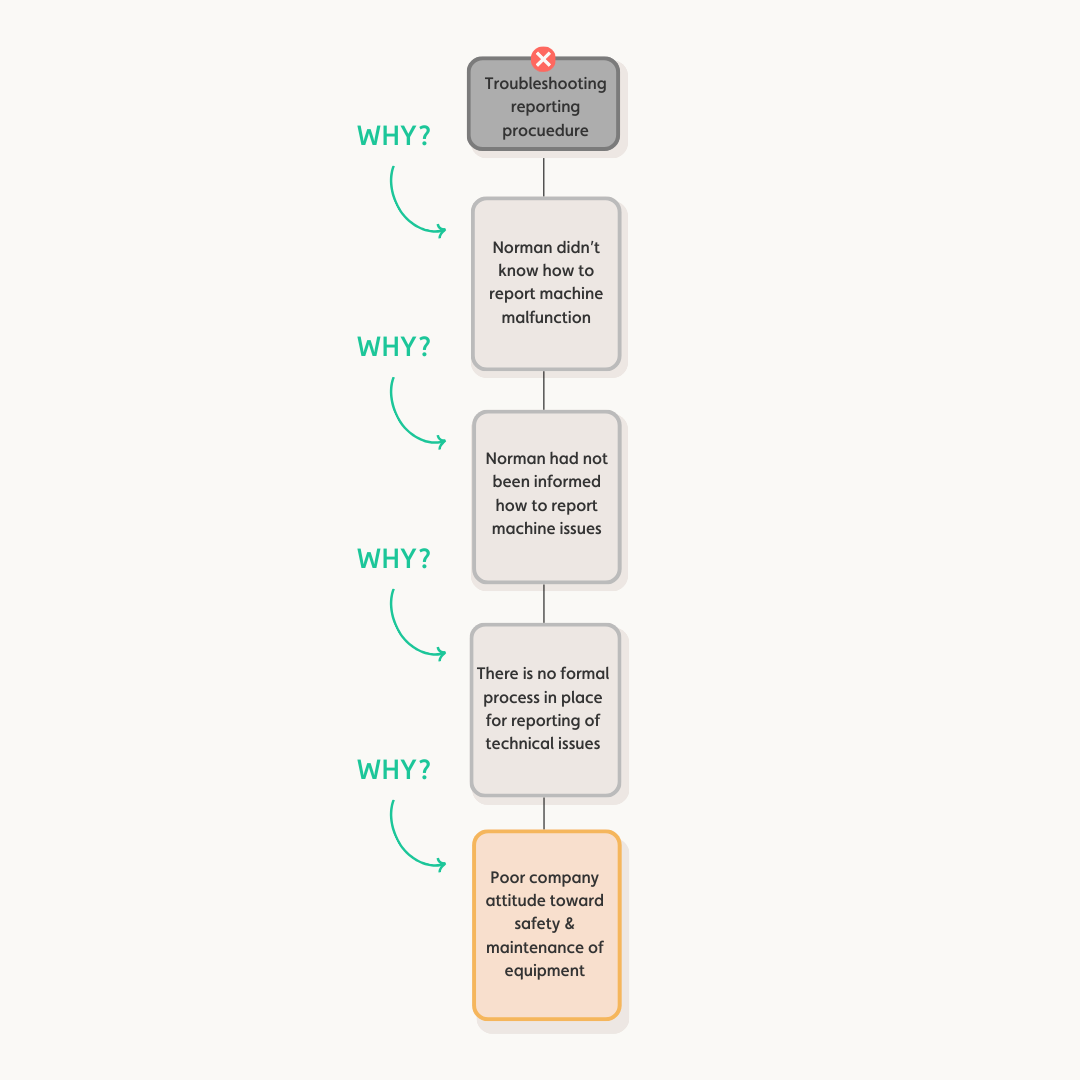5 Advantages of an In-Depth Incident Investigation

In this article, we’ll explore five key advantages of conducting an in-depth incident investigation. But first, what exactly is an incident investigation? Whether you’re new to the process or a seasoned expert, incident investigations aim to uncover the root cause of an incident and prevent future occurrences. To learn more about the basics, head over to our Incident Insight blog.
We all strive for a safe workplace environment. Yet, despite our best efforts, accidents and near misses still occur. To create safer working environments, many organisations have adopted the practice of in-depth incident investigations. This powerful risk management tool is proven to identify not only the immediate causes but also the underlying root causes of incidents, helping prevent similar issues from arising in the future.
Here are 5 advantages of an in-depth incident investigation:
- Identifying operational weaknesses
Conducting a thorough incident investigation provides organisations with an opportunity to clearly identify and uncover potential weaknesses across business operations. Whenever an incident occurs in the workplace it implies a gap or lack of guidance within current safety procedures. Investigations can often reveal some incidents are initially triggered through actions taken far before reaching the frontline, this could be weeks or months in advance of the incident date.
The Five Whys is a recognised method of questing to help understand how an incident initially occurred. The aim of this investigation method is to uncover what happened in or under five key moments. As seen in Figure 1, (Figure 1. Edge gluer example), if a troubleshooting procedure fails, an investigation may reveal staff members did not know how to report a machine malfunction (immediate cause), But why? Dig a little deeper and you may uncover staff members have not received sufficient safety training (immediate cause 2) There was no formal training process for technical issues such as reporting machine maintenance (immediate cause 3), and lastly, there is poor company attitude towards safety and maintenance of equipment (root cause).

Through gathering information on how and why incidents may occur, organisations are able to gain a much deeper understanding of their operational weaknesses. These insights will allow for sufficient improvements across safety processes. An incident investigation allows companies to transform potential risks into areas for improvement, making the workplace a safer environment for everyone.
2. Workforce engagement and cooperation
An effective incident investigation should be thorough and conducted with an open dialogue across the relevant levels of the workforce involved, as limiting discussion to senior management alone could lead to missed insights. Staff, particularly those directly involved in an incident, play a crucial role in providing firsthand information and identifying immediate causes. Engaging employees in the process in effect boosts work morale and attitude towards health and safety protocols.
However, it’s important to note that the investigation process doesn’t need to involve the entire workforce—only those whose role is necessary to break down and understand the full picture. The findings should remain confidential until all evidence has been collected and the report finalised.

3. Understanding risk
There is a famous saying by George Santayana, it goes, “Those who cannot remember the past are condemned to repeat it.” We as humans have a tendency to forget why a problem initially occurred, which leads us to encounter the very same issue again in the future. Organisations are no different. Without conducting in-depth incident investigations, the opportunity to pinpoint the immediate and root cause of an accident could be missed… Identifying these can prevent future recurrences of similar problems.
An effective incident investigation enables a clear understanding of potential risks associated with an organisations operations. Every incident, no matter how minor, can provide valuable data on what could go wrong in a work environment. For instance, recurring issues in day-to-day operations of an organisation may signal a deeper, systemic issue which needs to be addressed.
4. Opportunity for professional development and training
Incident investigations serve as an educational tool for both management and staff. By analysing what went wrong, teams can identify gaps in knowledge or training. For instance, if an incident reveals that certain safety protocols were not followed, it may indicate employees need further instruction on those procedures. This creates an opportunity to improve safety training programs, ensuring individuals across the organisation understand these safety measures, and therefore have fewer incidents in the future.
5. A full safety overview
And last but not least, an incident investigation provides a comprehensive overview of an organisation’s safety performance. Reviewing each incident in depth enables companies to gain a holistic view of how effective their risk control measures are and where improvements can be made. This overview is essential for creating long-term safety strategies to prevent similar incidents in the future.
Conclusion
And that wraps up the five key advantages of conducting in-depth incident investigations. At Incident Insight, part of the Salus Suite, we understand the complexities involved in these investigations and their role in fostering a safer workplace. Our platform is designed to simplify the entire investigation process, helping you quickly identify root causes to help prevent future incidents.
Discover more about Incident Insight and how it can help to streamline your incident investigations. Send us an email at support@salus-suite.com.




